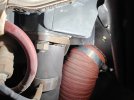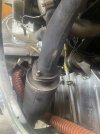40YearDream
Pre-takeoff checklist
Anyone have experience with this? (Just noticed this in an ad on Barnstormers)

 allavionics.com
allavionics.com
Looks like it could be convenient when flying rental or club aircraft (that don't have anything better than the 'card with the dot')

MY-CO USB Carbon Monoxide Detector – AllAvionics.com
An ideal aircraft cockpit companion! MY-CO USB Carbon Monoxide Detector uses a USB power source to continuous monitoring CO levels during flight.
 allavionics.com
allavionics.com
Looks like it could be convenient when flying rental or club aircraft (that don't have anything better than the 'card with the dot')





